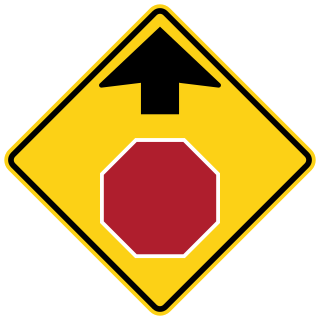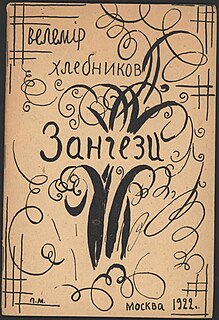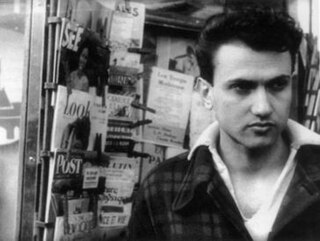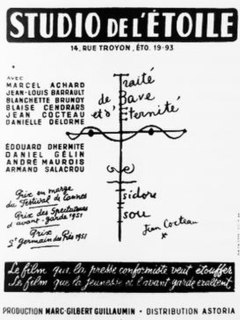The Situationist International (SI) was an international organization of social revolutionaries made up of avant-garde artists, intellectuals, and political theorists. It was prominent in Europe from its formation in 1957 to its dissolution in 1972. The intellectual foundations of the Situationist International were derived primarily from libertarian Marxism and the avant-garde art movements of the early 20th century, particularly Dada and Surrealism. Overall, situationist theory represented an attempt to synthesize this diverse field of theoretical disciplines into a modern and comprehensive critique of mid-20th century advanced capitalism.

The avant-garde is a person or work that is experimental, radical, or unorthodox with respect to art, culture, or society. It is frequently characterized by aesthetic innovation and initial unacceptability.

A pictogram, also called a pictogramme, pictograph, or simply picto, and in computer usage an icon, is a graphic symbol that conveys its meaning through its pictorial resemblance to a physical object. Pictographs are often used in writing and graphic systems in which the characters are to a considerable extent pictorial in appearance. A pictogram may also be used in subjects such as leisure, tourism, and geography.
The Letterist International (LI) was a Paris-based collective of radical artists and cultural theorists between 1952 and 1957. It was created by Guy Debord and Gil J. Wolman rejoined by Jean-Louis Brau and Serge Berna as a schism from Isidore Isou's Letterist group. The group went on to join others in forming the Situationist International, taking some key techniques and ideas with it.
Lettrism is a French avant-garde movement, established in Paris in the mid-1940s by Romanian immigrant Isidore Isou. In a body of work totaling hundreds of volumes, Isou and the Lettrists have applied their theories to all areas of art and culture, most notably in poetry, film, painting and political theory. The movement has its theoretical roots in Dada and Surrealism. Isou viewed his fellow countryman Tristan Tzara as the greatest creator and rightful leader of the Dada movement, and dismissed most of the others as plagiarists and falsifiers. Among the Surrealists, André Breton was a significant influence, but Isou was dissatisfied by what he saw as the stagnation and theoretical bankruptcy of the movement as it stood in the 1940s.

Zaum are the linguistic experiments in sound symbolism and language creation of Russian Futurist poets such as Velimir Khlebnikov and Aleksei Kruchenykh. Zaum is a non-referential phonetic entity with its own ontology. The language consists of neologisms that mean nothing. Zaum is a language organized through phonetic analogy and rhythm. Zaum literature cannot contain any onomatopoeia or psychopathological states.

Experimental film, experimental cinema, or avant-garde cinema is a mode of filmmaking that rigorously re-evaluates cinematic conventions and explores non-narrative forms or alternatives to traditional narratives or methods of working. Many experimental films, particularly early ones, relate to arts in other disciplines: painting, dance, literature and poetry, or arise from research and development of new technical resources.

Isidore Isou, born Isidor Goldstein, was a Romanian-born French poet, dramaturge, novelist, film director, economist, and visual artist who lived in the 20th century. He was the founder of Lettrism, an art and literary movement which owed inspiration to Dada and Surrealism.
This is an alphabetical index of articles about aesthetics.

Cubo-Futurism was an art movement that arose in early 20th century Russia, defined by its amalgamation of the artistic elements found in Italian Futurism and French Analytical Cubism. Cubo-Futurism was the main school of painting and sculpture practiced by the Russian Futurists. In 1913, the term ‘Cubo-Futurism’ first came to describe works from members of the poetry group ‘Hylaeans,’ as they moved away from poetic Symbolism towards Futurism and zaum, the experimental “visual and sound poetry of Kruchenykh and Khlebninkov”. Later in the same year the concept and style of ‘Cubo-Futurism’ became synonymous with the works of artists within Russian post-revolutionary avant-garde circles as they interrogated non-representational art through the fragmentation and displacement of traditional forms, lines, viewpoints, colours, and textures within their pieces. The impact of Cubo-Futurism was then felt within performance art societies, with Cubo-Futurist painters and poets collaborating on theatre, cinema, and ballet pieces that aimed to break theatre conventions through the use of nonsensical zaum poetry, emphasis on improvisation, and the encouragement of audience participation.

Asemic writing is a wordless open semantic form of writing. The word asemic means "having no specific semantic content", or "without the smallest unit of meaning". With the non-specificity of asemic writing there comes a vacuum of meaning, which is left for the reader to fill in and interpret. All of this is similar to the way one would deduce meaning from an abstract work of art. Where asemic writing distinguishes itself among traditions of abstract art is in the asemic author's use of gestural constraint, and the retention of physical characteristics of writing such as lines and symbols. Asemic writing is a hybrid art form that fuses text and image into a unity, and then sets it free to arbitrary subjective interpretations. It may be compared to free writing or writing for its own sake, instead of writing to produce verbal context. The open nature of asemic works allows for meaning to occur across linguistic understanding; an asemic text may be "read" in a similar fashion regardless of the reader's natural language. Multiple meanings for the same symbolism are another possibility for an asemic work, that is, asemic writing can be polysemantic or have zero meaning, infinite meanings, or its meaning can evolve over time. Asemic works leave for the reader to decide how to translate and explore an asemic text; in this sense, the reader becomes co-creator of the asemic work.

The Ultra-Lettrist art movement was developed by Jean-Louis Brau, Gil J. Wolman, and François Dufrêne in the 1950s when they split from Isidore Isou's Lettrism movement.

Experimental literature is a genre that is, according to Warren Motte in his essay "Experimental Writing, Experimental Reading", "difficult to define with any sort of precision." He says the "writing is often invoked in an "offhand manner" and the focus is on "form rather than content." It can be in written form of prose narrative or poetry, but the text may be set on the page in differing configurations than that of normal prose paragraphs or in the classical stanza form of verse. It may also be entwined with images of a real or abstract nature, with the use of art or photography. Furthermore, while experimental literature was traditionally handwritten on paper or vellum, the digital age has seen an exponential leaning to the use of digital computer technologies.
Maurice Lemaître was a French Lettrist painter, filmmaker, writer and poet. Lemaître was Isidore Isou's right-hand man for nearly half a century, but began to distancing himself from Lettrism in the 2000s.
Anton Perich is a Croatian-American filmmaker, photographer and video artist, born in Dubrovnik, Croatia, in 1945. He has lived and worked in New York City since 1970.
Francois Dufrene was a French Nouveau realist visual artist, Lettrist and Ultra-Lettrist poet. He is primarily known as a pioneer in sound poetry and for his use of décollage within Nouveau réalisme.

Signalism represents an international neo-avant-garde literal and art movement. It gathered wider support base both in former Yugoslavia and the world in the late 1960s and the beginning of the 1970s.
Frédéric Acquaviva is a French autodidact experimental composer and avant-garde sound artist living between Paris, Berlin and London who works with voices, instruments, electronics, film and body sounds.

Venom and Eternity is a 1951 French avant-garde film by Isidore Isou that grew out of the Lettrist movement in Paris. It created a scandal at the 1951 Cannes Film Festival.
Poetism was an artistic program in Czechoslovakia which belongs to the avant-garde; it has never spread abroad. It was invented by members of avant-garde association Devětsil, mainly Vítězslav Nezval and Karel Teige. It is mainly known in the literature form, however, it was also intended as a lifestyle. Its poems were apolitical, optimistic, emotional, proletaristic, describing ordinary, real things and everyday life, dealing mainly with the present time. It doesn't have any punctation.











